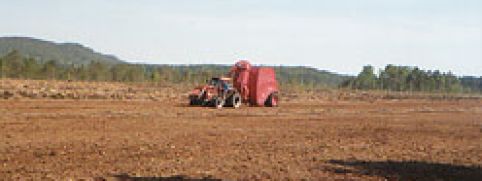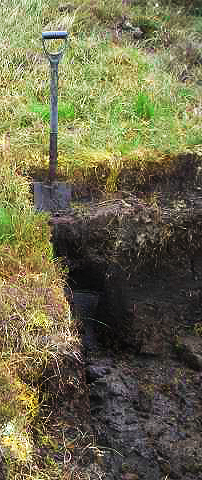
Peat moss consists of partly decomposed vegetation that has been deposited and compressed over long time, sometimes thousands of years.
Layers on layers of peat is formed in wetlands where the absence if oxygen prevents the natural decomposition of vegetation.
Wetlands (marshes) are the main sources of peat
As organic materials accumulate over thousands of years, the peat moss presents a cross-section over the past vegetation, as well as an indicator of changes in the environment.
Peat is am important source of emergy in many parts of the world.
By volume there is about four billions m³ peat globally, making up ca 2% of the total landmass (ca 3 million km ²), and containing an estimated 8000 million terajoules of energy.
Kallak Absorbent produced by peat bog close to our own factory in Trøgstad in the county of Østfold.
Here the family started with peat production already in 1955. Over the years, both harvesting of peat and production evolved, and today there are machines and modern equipment that gets the hard work done both in the processing and outside in the fields.
Peat is used in an amount purposes over the years. In recent years they have also opened their eyes to peat's unique ability to absorb hydrocarbons.

This property gives us a great potential for improvement in the way we dispose of hazardous waste. Use of Kallak Absorbent in for instance an oil-spill can radically reduce the risk of damage to the environment as well in water as on land.
The ready processed product has a very high capacity to absorb hydrocarbons. Kallak Absorbent absorbs oil and other hydrocarbons into the cells and and becomes encapsulated there. The encapsulation of the hydrocarbon starts almost immediately on contact. Absorption capacity is the result of a very large surface area that is created inside the processed peat.
Since Kallak Absorbent is hydrophobic the absorption of water is resisted for weeks.
This allows Kallak Absorbent to float on water and absorb hydrocarbons from the surface of the water continues to float for weeks after being saturated with oil. This means that there will be ample time to collect the saturated materials. If however it should sink, it will still remain encapsulated in Kallak Absorbent without causing environmental damage.
Kallak absorbers, which in itself is already somewhat modified, will efficiently convert hydrocarbons by means of nature's own gardeners: the microorganisms. All hydrocarbons are organic carbon mixtures that contain carbon, hydrogen and oxygen.
Microactivity will break almost all hydrocarbons down to carbon dioxide and water in a short time. This usually happens within a period of three months to a year, significant because in any case the hydrocarbon degraded long before Kallak absorbent. Complete conversion of Kallak Absorbent happen until several years later.
In Norway the Kallak Absorbent is marketed by TESS and is known as "TESS Torvabsorbent" in the domestic markets.
| Here on the left side you see a photo from our own fields in Trøgstad, east of Oslo. This type of peat harvesting basically involves "vacuum cleaning" the fine-grain peat.
The image under here illustrates the cross section of the peat itself. This land is systematically drained, but the original peat moss holds a large amount of stangnant water, and neither daylight nor oxygen can penetrate the depths of the moss.
It becomes an anaerob environment: totally sealed off.

|